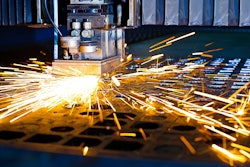Case Study
“ We’ve taken our Langley DC to a new level of operational efficiency with
the Honeywell mobile devices.”
Renato Baldo, General Manager, Julian Tile
PERFECTLY COLORED: JULIAN TILE PROVIDES
FAST AND ACCURATE ORDER FULFILLMENT,
WITH THE HELP OF HONEYWELL
The Solution: Honeywell Mobile Computers
and Cloud-Based Software
Julian Tile needed automatic identification and data capture (AIDC) devices
that could survive the drops and spills of its rugged DC environment. The
devices also had to be compatible with the company’s existing enterprise
software.
On the advice of its wireless and data collection solutions provider, a
Honeywell partner, Julian Tile rolled out Honeywell CK71 ultra-rugged
mobile computers and Honeywell CV61 fixed vehicle-mount computers
with SR61 industrial scanners to digitize and automate the manual
processes in the DC.
Optimized for warehouse and distribution environments, the CK71 mobile
computer offered the perfect balance of ruggedness with next-generation
features and rapid barcode scanning technology. The CV61 forklift-
mounted computers support Julian Tile’s SYSPRO enterprise resource
planning (ERP) tools and feature a touchscreen interface with a rugged,
externally backlit keyboard. These features enable warehouse workers to
easily input data with their gloved hands.
Another Honeywell partner, a Canadian and U.S. software and hardware
service provider and reseller, implemented RITESCAN barcoding software,
which fully integrated with Julian Tile’s SYSPRO ERP solution and the
Honeywell devices. All of the software operates on the cloud, which
eliminated the need for Julian Tile to have an onsite server, reducing
operating costs and the need for additional onsite technical support.
The Challenge: Digitizing
Manual Processes
In 2012, Julian Tile opened a new
40,000-square-foot distribution
center (DC) in Langley, B.C. to process
all of its incoming tile orders.
Serving the company’s five locations,
the new DC managed the movement
and tracked the dye lots of more
than 4,000 product skids. (A dye
lot is a manufacturer’s code that
identifies certain batches of tile.)
Before the new DC opened, all
inventory purchase order receipts,
sales order picking, multiple bin
locations and dye lot numbers were
recorded manually using a written
and batch data entry process.
This time-consuming workflow process
increased the risk of picking errors,
which could result in the wrong tile
or dye lot being sent to the customer,
leading to mismatched tiles – and
a negative service experience.
Another challenge: filling customer
orders as fast as possible. If a customer
wanted to order more tiles, employees
had to confirm the original order by
searching for paper documents.
Established in 1978, Julian Tile is a leading wholesale-distributor of porcelain tile and
natural stone in Western Canada and the Western United States. With more than 80
employees, the company is headquartered in Langley, B.C., and prides itself on the quality
of every product in its Julian Collection.
Julian Tile Generic CS | Rev A | 05/16
© 2016 Honeywell International Inc.
For more information
www.honeywellaidc.com
Honeywell Sensing and
Productivity Solutions
9680 Old Bailes Road
Fort Mill, SC 29707
www.honeywell.com
Julian Tile was able to automate most of its order fulfillment process with the help of Honeywell
technologies. Order pickers can now access real-time information on available inventory
including bin location, physical quantity and dye lot numbers.
The Benefits
• The AIDC solution was an instant hit with warehouse workers, and Julian
Tile saw an immediate decrease in the amount of time workers spent
finding, documenting and processing orders. Order fulfillment times
decreased 50%, while picking accuracy improved 20%. Customer
satisfaction increased as a result.
• The annual stock inventory count process was reduced significantly:
Each year, workers had to manually find, read, write and confirm product
numbers for every item in the warehouse. The process took three full
days and a number of employees and resulted in countless pages of
handwritten notes. With the automated data capture solution, this
annual event was reduced to a single day with a small team of warehouse
workers.
• Workers are now able to access and update tile inventory in real time.
Locating products has become much easier. Because the connected
devices allow workers to scan rather than manually enter product
information, data accuracy is ensured, and sales order status is updated
as the order is picked. In addition, by scanning bin transfers in real time,
location accuracy of the skids has improved by two days.
Julian Tile Achieves New Level of Operational Efficiency
Find out how Julian Tile Inc. transformed their new central distribution warehouse, eliminating manual written and batch data entry processes, with the help of connected workflow solutions from Honeywell.
Latest in Home
AD to Merge with Plumbing, HVAC Buying Group
September 2, 2025
Relevant Industrial Acquires Lindberg Process Equipment
September 2, 2025
Houston Waterworks Distributor Acquires Kansas Counterpart
August 29, 2025






















